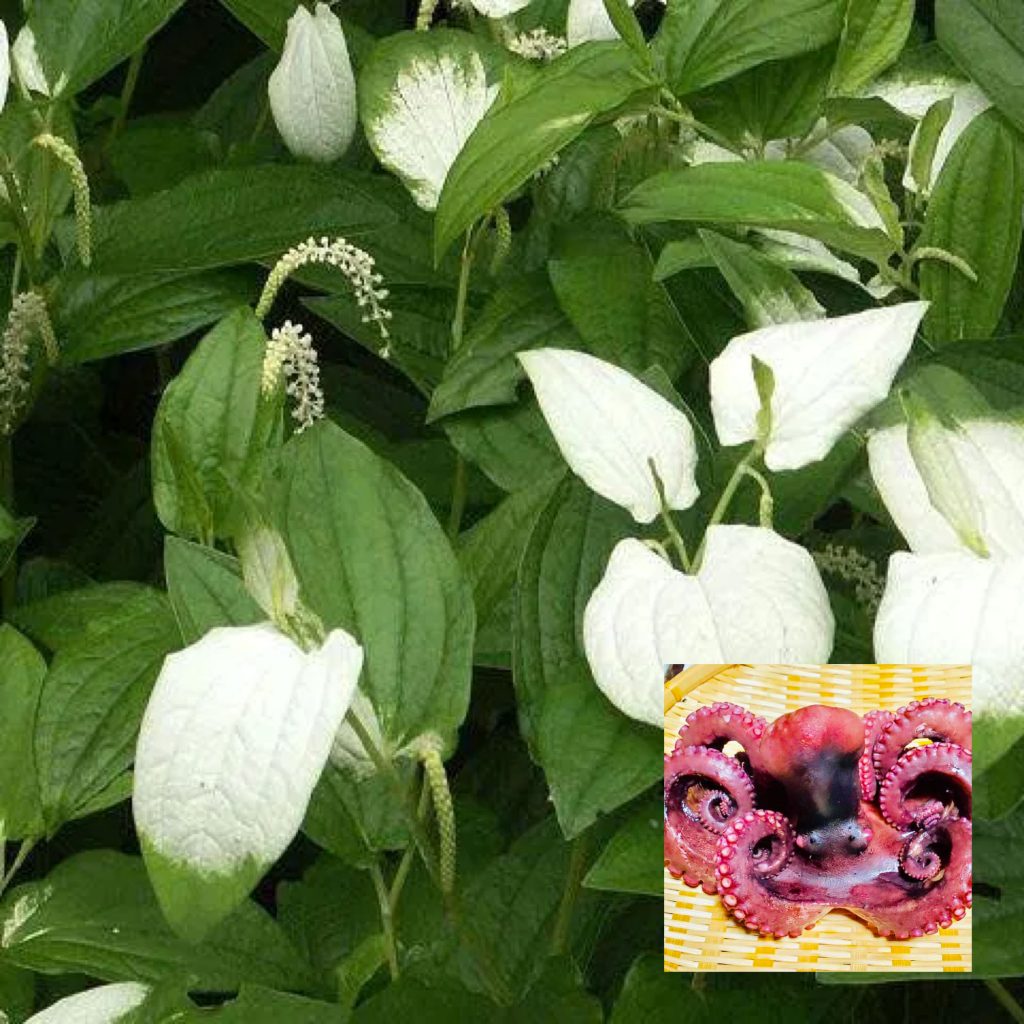
Today, the 11th day counting from the summer solstice, it is said to Hangesho from July 2nd to the 7th of Tanabata. In the past, it was said that poison would fall from heaven during the Hangesho period, and it was necessary to finish planting rice by this period. Hangesho was considered to be an important milestone day for farmers. The origin of the name is the time when the grass of the family Houttuynia cordata, also known as Katashirogusa, becomes half white and looks like half-makeup, so this time is called Hangesho. In Kansai, it is customary to eat octopus on Hangesho days. The wish is that the roots of rice should take root in all directions like the legs of an octopus. In Kagawa prefecture, they eat udon instead of octopus, so this day is designated as “Udon Day”. In addition, in Fukui prefecture, they eat mackerel , and in other regions, they eat yam.
夏至から数えて11日目の今日、7月2日から七夕の7日までを半夏生(はんげしょう)といいます。半夏生の間は天から毒が降るとされていたそうで、昔はこの期間までに田植えを終わらせておく必要があったそうです。半夏生は農家にとって大切な節目の日とされていたんですね。名前の由来は、ハンゲショウ、別名カタシログサ(片白草)というドクダミ科の草が、その名の通り半分白くなり、半化粧をしているように見える時期なので、この時期が半夏生と言われるようになった説があります。関西では半夏生の日にはタコを食べる風習があります。 「稲の根が、タコの足のように四方八方にしっかり根付きますように」との願いが込められています。香川県ではタコではなくうどんを食べるので、この日が「うどんの日」に制定されています。そのほか福井県ではサバを食べたり、ヤマイモを食べたりする所もあります。
